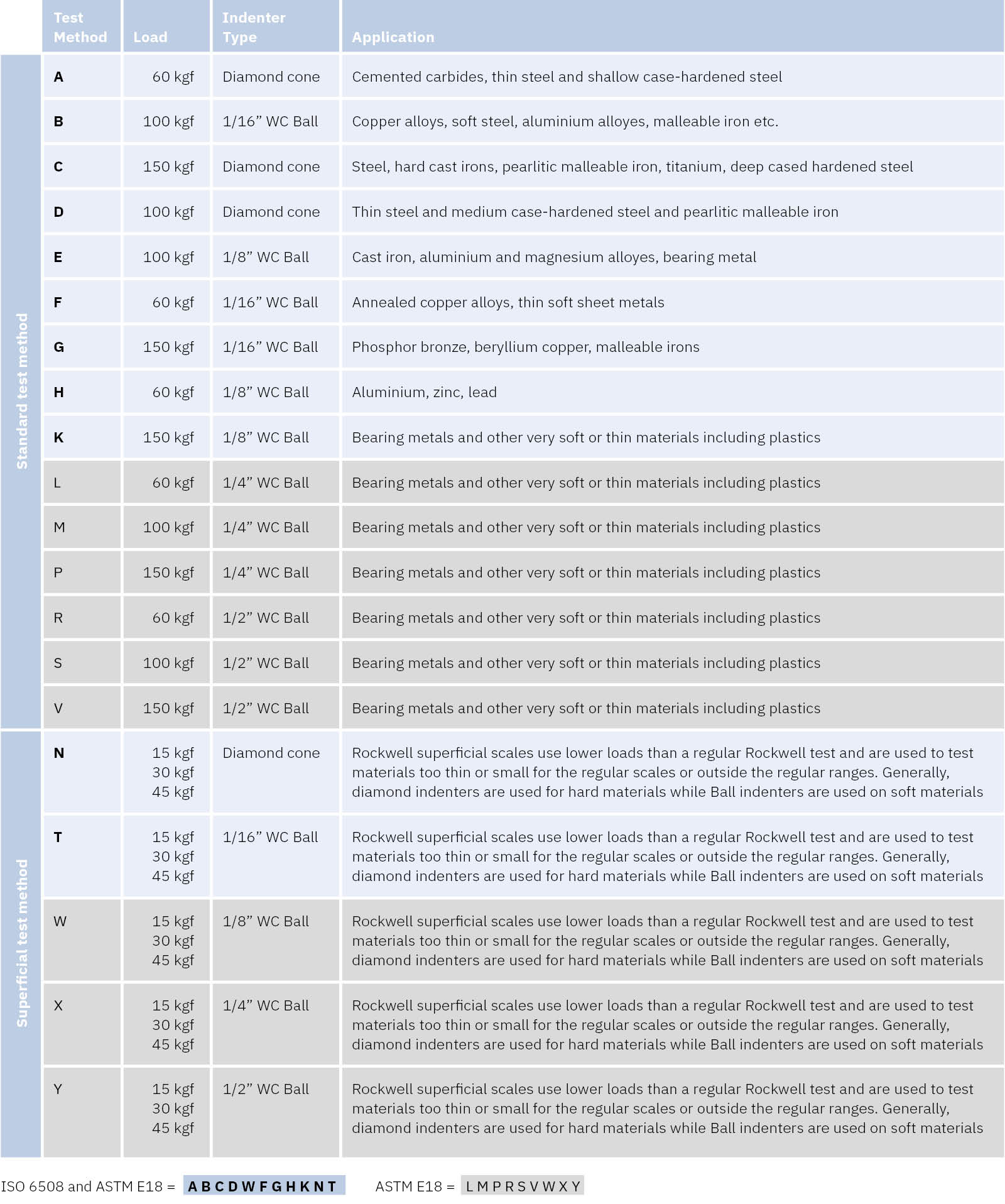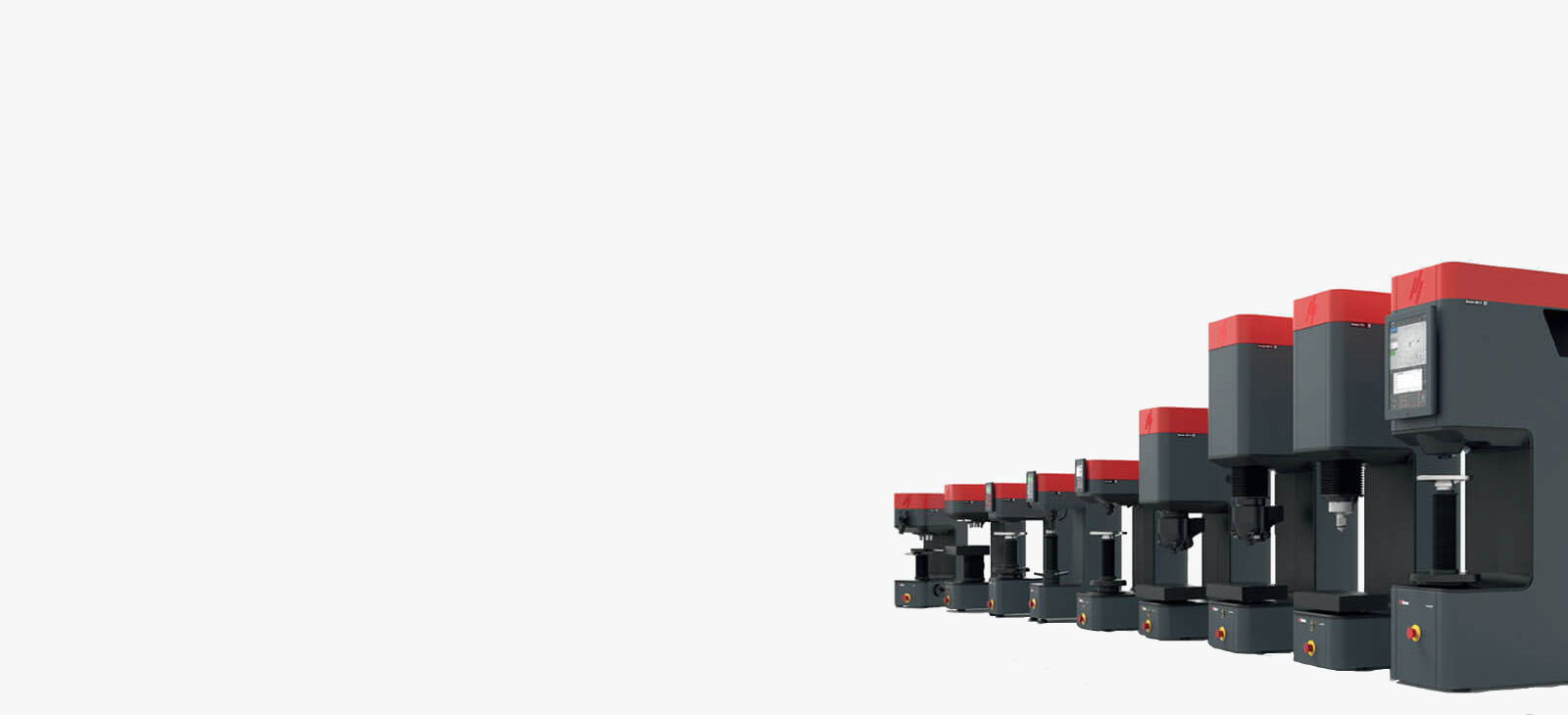DEFINITION OF THE ROCKWELL HARDNESS TEST
The Rockwell hardness test is often used as a ‘quick test’ on the production floor or in the laboratory, mainly for metallic materials. However, it can also be used for more advanced tests, such as the
Jominy test (End Quench Test). Due to the relatively high loads used, application of the Rockwell hardness test is generally limited to larger sample geometries.
The Rockwell test calculation
The Rockwell hardness test calculation (HR) is made by measuring the depth of an indentation made with a diamond or tungsten carbide ball.
Indenters
The Rockwell hardness test utilizes 1 of 5 different indenters:
- Diamond cone
- Tungsten ball in sizes 1/16", 1/8", 1/4", or 1/2"
Main loads
The Rockwell hardness test utilizes 1 of 6 different main loads:
- 15 kgf, 30 kgf, 45 kgf, 60 kgf, 100 kgf, or 150 kgf
In total, this gives 30 different Rockwell scales. Each one is characterized by a different combination of indenter type and main load, and is suitable for a particular material or application (for example, HRA, HRB, HRC, HR30N).



















